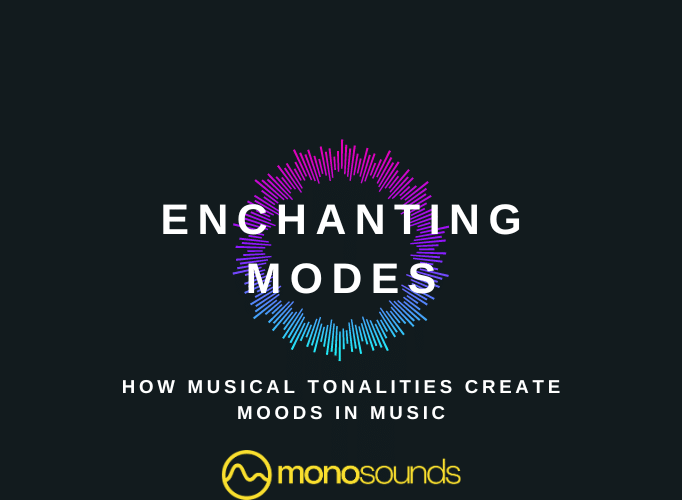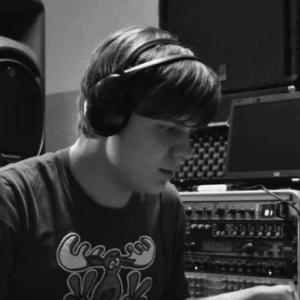
This is the my personal Top-5 of Xfer Serum Presets…

There are many elements in music that affect the sound and mood of a song. One of these is musical modes. They have been used in music for centuries and are an integral part of its development. They determine the tone and character of the sound, create a special atmosphere and help to convey certain emotions and moods.
Musical modes are the foundation of musical harmony. Their use allows composers and musicians to create harmonic relationships between notes that sound simultaneously. Each mode has its own unique sound and emotional tone that can be used to convey certain ideas and moods in music.
Musical harmonies play an important role in creating melodies and harmonies, allowing you to create different variations of compositions. Musicians use this technique to create a certain mood or effect, such as a mystical or sad atmosphere, and to play on the emotions of listeners.
The importance of musical modes is that they can completely change the sound and emotional component of music. Knowing them and using them correctly helps composers and musicians create more interesting and unique compositions that have a deep emotional effect on listeners. In this article we will look at the basic types of musical varieties and their characteristics, we will review examples of successful use and we will give some useful tips for beginner composers.
A musical mode is a system of harmonic relationships that defines the sound material used in music. It is the basis for creating melodies, chords, harmonies, and other elements of musical composition.
One of the main components of musical harmony is tonality. It defines the central tone of the composition around which the harmony is built. Tone can be major or minor and indicates which sounds are more or less of a priority in a given track.
The diatonic is a musical system consisting of 7 sounds called diatonic. They come in major or minor and form the basis of musical harmony in most Western music. They are placed at certain intervals from each other and create a familiar and pleasant sound image.
Chromatics is a system of musical sounds that uses 12 possible notes. It is characteristic of more complex and experimental musical genres: jazz, classical music, and contemporary styles in which composers and musicians seek to create more unusual and expressive soundscapes.
Another important component of musical harmony is considered to be modality. It is a way of using sound matter based on certain musical patterns and ancient harmonic relationships. It is used in different cultures and musical genres, allowing musicians and composers to create a variety of sound images.
It is important to understand that a musical mode is not just a set of sounds, but a system that describes the relationship between them. Composers and musicians use them to create music with specific structure, expression, and emotional content. Understanding the basic components of musical harmony is an important step toward creating and interpreting music.
The Ionic mode is widely used in Western music. It is also known as a major scale and is characterized by a joyful and cheerful sound. It is based on a tonality that has seven pitches, where each pitch has its own name, starting with the first pitch, called the tonic. In the Ionic mode, the highest pitch is called the leading septima and creates a strong sense of ending melody.
The Ionic mode is usually used to create optimistic, upbeat and energetic melodies. It is effective for expressing joy, happiness, and elation. It is used to create melancholic and sad melodies, when certain steps are played with a special accent.
The sound of the Ionic mode is usually described as open, bright, and energetic. This is due to its construction and the use of a large number of major chords. However, by changing accents and adding minor notes, it is possible to create a darker or more disturbing sound.
The Ionic mode is widely used in pop, rock, country and jazz. It is rightfully considered one of the most popular and allows composers and musicians to express a wide range of emotions in their works.
The Doric mode is second in the scale and represents a deep and masculine sound. It is characterized by a small septima (on the seventh step from the basic tone) and a slight decrease in the quinta (on the fourth step). It is often found in the styles of rock, folk and jazz.
The Doric mode creates an emotional and sad mood, which is derived from the reduced quint and reduced septima. This makes it ideal for expressing melancholy and longing in music. Because of its stability, it creates a special sense of solemnity and power.
Composers and musicians often use the Doric mode to express sadness, longing, or mental illness in their compositions. It is effective in ballads, love songs, and music about spiritual themes. The Doric mode is used both to create a tranquil atmosphere and to convey tension and anxiety.
The Lydian mode takes its name from the ancient Greek region of Lydia, where it was probably first used in antiquity.
The main components of the Lydian mode are the decreased seventh step and the increased fourth step in the major key. Thus, the following step sequence is observed: tone-tone-semitone-semitone-semitone-semitone.
The Lydian mode is characterized by a bright and exotic sound that evokes a feeling of joy and solemnity. It is used to create oriental melodies and harmonies that were often heard in the music of the Middle Ages and early Renaissance.
When using the Lydian mode, composers and musicians write music with unpredictable harmonic progressions that capture the attention of listeners. The effect on the sound of a composition can be quite powerful, stirring up vivid emotional impressions in the listener. For example, a sense of mystery or even sacredness.
Mixolydian
Mixolidium mode is formed by the fifth step of the diatonic scale and the raised seventh step. It gives the composition a special sound that is often used in blues, jazz, rock music and other genres.
The Mixolydian mode creates an effect of dominance and tension. It makes listeners expect further development of tension in the composition and creates a kind of dramatic effect. This is because the elevated seventh step is directly related to the dominant chord, which is an integral part of the functional mode of modern music.
The mixolydian mode often uses blues notes, which add even more tension and drive. Many famous musicians (Jimmy Hendrix and Eric Clapton) actively added the Mixolydian mode to their compositions.
The Aeolian mode belongs to the natural minor and is used in music to create a melancholic and mysterious atmosphere. It has the following step sequence: tone – semitone – tone – semitone – tone – tone.
This mode is usually needed to express sadness, longing and melancholy. It is often found in ballads, sad songs, and meditative music. Composers actively add chords from the Aeolian mode to convey some sadness and emphasize the melancholic atmosphere of a track.
However, despite its sad basis, the Aeolian mode has often been used to create a tense atmosphere. For example, when you want to express fear or uncertainty. The Aeolian mode is considered a powerful tool for conveying emotions and is often used by composers and musicians in various genres: rock, folk, jazz and classical music.
The Locrian mode is the rarest and most unusual mode in existence. It is built on the basis of a small second, which creates a gloomy and unstable sound. It is used mainly in jazz and rock music, where it is responsible for giving the composition a special energy and aggressiveness.
Unlike the others, the Locrian mode does not have a base note, which would be the center of the tonality. Instead, it uses the subdominant as the base note, which gives it a special characteristic. The Locrian mode is characterized by a specific sound system that changes depending on which notes are used in the composition.
Adding elements of the Locrian mode gives the music a strong and somber sound, which is often used to express anger, tension, and anxiety. This is especially useful for compositions that are intended to convey some theme or idea. Keep in mind that due to its uniqueness and originality, the Locrian mode is difficult to understand and use, because it does not have a clear base note and can sound unstable at times.
All in all, it is a promising and powerful instrument for composers and musicians, which has proven itself in writing unique and unusual compositions. Its gloomy and unstable sound gives it a special depth and character that makes it an important element in the world of music.
Different harmonies are used in music to convey certain moods and emotions. Let’s look at a few examples of famous songs and tunes that use this technique and analyze their emotional component.
As an example of using the Ionic mode, consider the song “Stairway to Heaven” by Led Zeppelin. This song became a rock classic and one of the most popular for its time. The Ionic harmony in this composition creates the effect of a harmonious and peaceful atmosphere, which emphasizes the beauty of the melody and adds emotional depth to it.
The Doric mode also has its hits, one of which was the song “Scarborough Fair” performed by Simon & Garfunkel. The Doric harmony in this composition creates an atmosphere of mystery and mystery, which emphasizes the meaning of the song.
The Phrygian mode is used in the composition “Maria” from the musical The Sound of Music. It creates a dramatic and intriguing atmosphere that reflects the mood of the song’s heroine and complements her story.
The Lydian mode was used in the composition “Theme from The Simpsons,” written by Danny Elfman. It creates a bright, catchy melody and adds a needed cheerfulness to it.
The Mixolydian mode is used in “House of the Rising Sun” by The Animals, where it creates an air of longing and sadness that emphasizes the meaning of the song and makes it very emotional.
The Aeolian mode can be heard in “Eleanor Rigby” by The Beatles. It creates a wistful and sad atmosphere that reflects the meaning of the song and its emotional depth.
The Locrian mode is rarely used, but you can hear it in the composition “O Fortuna” from Carl Orff’s Carmina Burana oratorio. The Locrian harmony in this composition creates a dramatic and tense atmosphere, which emphasizes the meaning of the story told in the music.
Musical harmonies are an integral part of modern music and are used by composers and musicians to create an emotional and harmonious atmosphere. They are indispensable both for creating tracks in traditional genres and for writing experimental music tracks.
One way to use musical harmonies in modern music is to combine different harmonies within a single composition. Composers can use them in specific parts of a song to create an interesting and dynamic sound. For example, start by using Doric and then move on to Phrygian or Lydian to create a more vibrant sound and convey a certain mood.
Another way to use it is to create new, author’s unique harmonies that combine elements of traditional ones. This helps create more experimental music that can reach a wider audience in the long run.
Musical harmonies play an invaluable role in the commercial success of music. Musicians and producers often use them to create a song that sounds familiar and appealing to a wide audience. For example, the Ionic fret is found in pop music because it has a familiar and familiar sound that is easy to remember.

This is the my personal Top-5 of Xfer Serum Presets…

Welcome to the ultimate guide on how to use Xfer…

Hip hop music has been one of the most popular…

Greetings fellow sound engineers and music creators, and welcome to…
